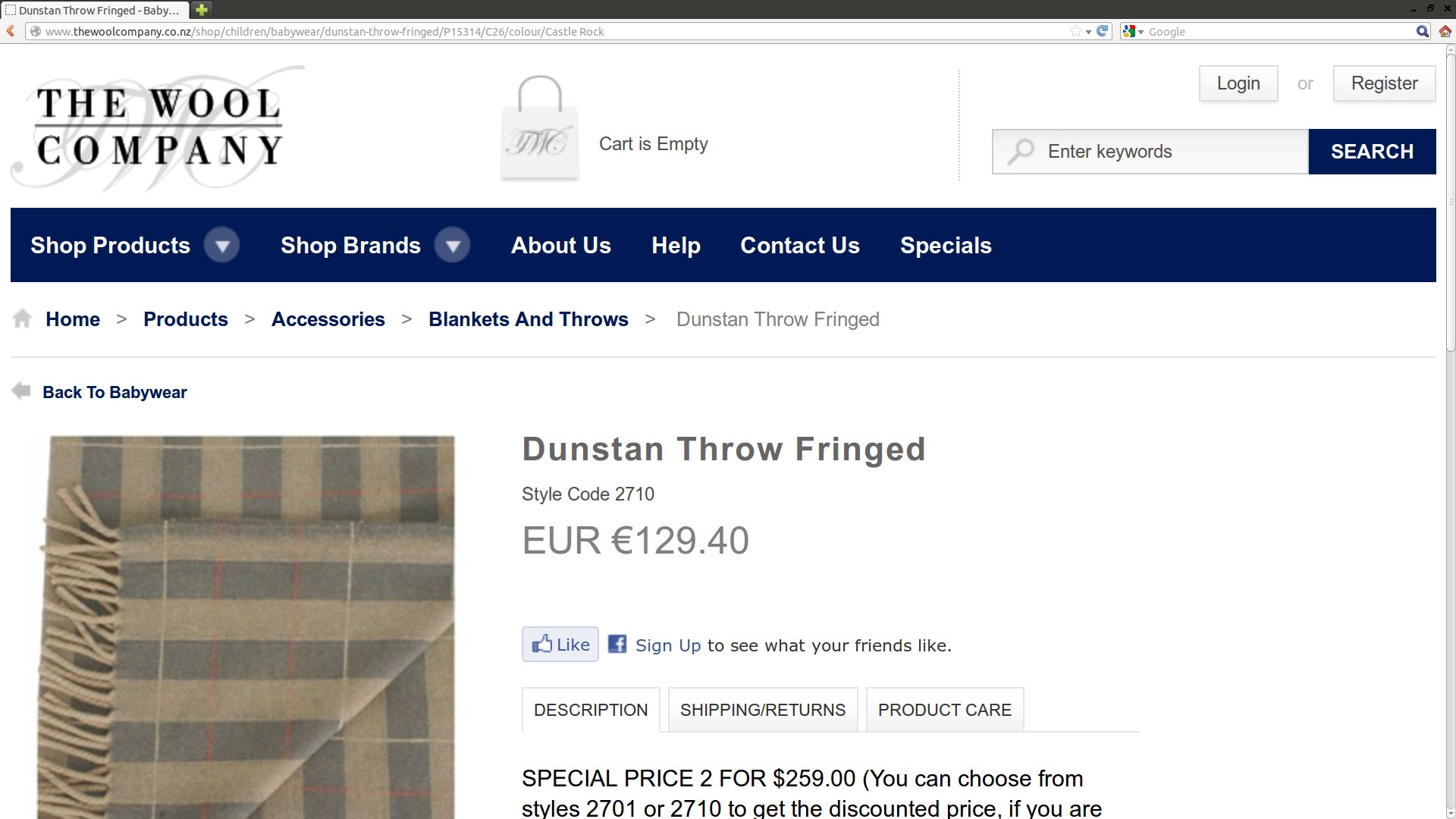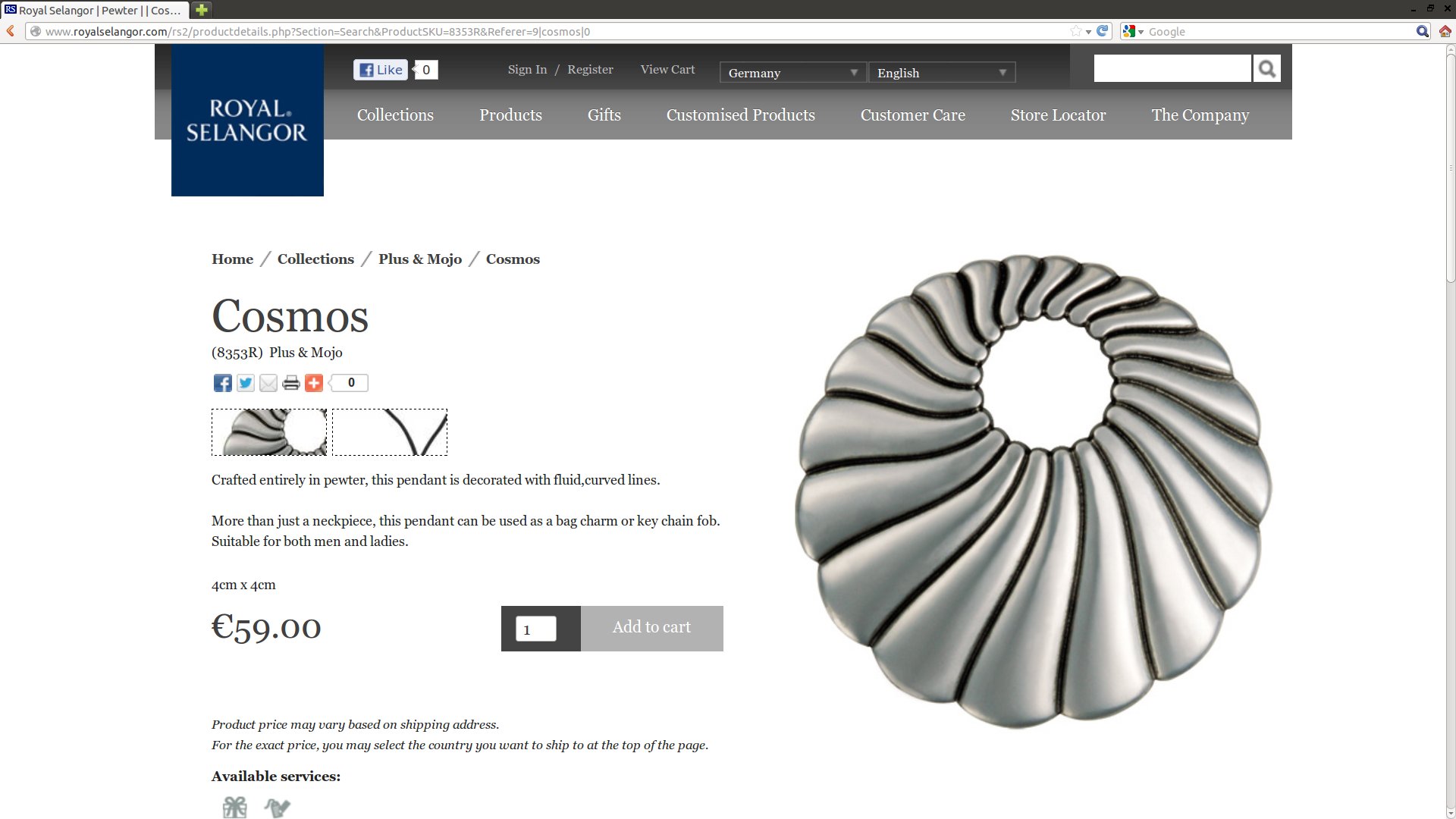During a trip to New Zealand I found this wool store near Taihape, on the road between Taupo and Wellington. I bought a couple of pieces and was so happy that I went to their website to buy some more, which also turned out to be a pleasant experience. However, when I returned yet again, a few days ago, they had changed the website: I was now being quoted in Euros, my native currency, and not in New Zealand dollars any longer.

I think this is a bad idea. Why? Some may feel they are being spied upon: They are not anonymous visitors any longer, the store is communicating they know something about you. When I enter a store and I’m asked: “Where are you from?” I can always lie. If I’m asked that question on a flea market somewhere I’d certainly do so: “I’m from Kazakhstan, derive from a long family of Mafiosi, and don’t you dare to double the asking price because you think I’m from Germany.”
The intention of the website is mostly likely a good one: To give me an easy shopping experience. I don’t have to convert from NZD to EUR myself. However, I wonder for how many international shoppers this is a real problem? Instead, the site creates the suspicion of price discrimination: Depending on where I’m from, I may have to pay more. This may not be true in this case, but I wonder about it, as may many others.
Here is another site that quotes me in Euros. I enjoy Royal Selangor’s products, but in this case I know that I’m paying a higher price if I order from Europe. Not only will I have to pay shipping, customs, and VAT, the EUR prices are also significantly higher than the Malaysian prices. Royal Selangor has a lot of outlets in different countries, and prices vary significantly (Malaysia, the home country, is still cheapest). Highly annoying, if you are a price-conscious shopper. At least, they disclose this information at the bottom of the page.

What’s the solution for the smart product manager and their user experience designer? Not to give up on price discrimination but to chose a different implementation strategy. Don’t create suspicion but be clear about it. A simple and effective solution is to always show the original price and then have convenience buttons for conversion right next to the original price. Or to do the conversion for the most popular currencies right away and display it.
Nobody says you can’t price-discriminate and charge people more depending on where they come from, whatever currency you display it in. Heck, Staples was recently discovered to charge different prices by county, within the same state! Personally, I think that being quoted in the original currency adds mystery and fun to international shopping, so you might even be better off. The fair website discloses that you price-discriminate.
Happy new year, 2013, everyone!









Leave a Reply to MMCancel reply